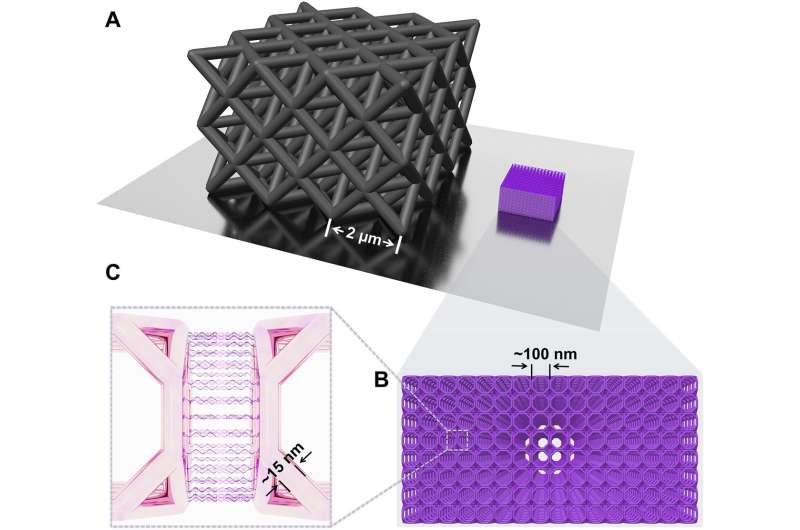October 2, 2023 report
This article has been reviewed according to Science X's editorial process and policies. Editors have highlighted the following attributes while ensuring the content's credibility:
fact-checked
peer-reviewed publication
trusted source
proofread
Using DNA as glue to hold nanostructures together and build ultra-strong colloidal crystal metamaterials

A team of chemical and biological engineers working with a group of nanotechnologists at Northwestern University in Illinois has developed a type of super-strong colloidal crystal metamaterial by gluing together metal nanostructures using strands of DNA.
In their paper published in the journal Science Advances, the group describes how they developed their technique and possible uses for the types of products they made.
Prior research has shown that very tiny metamaterials can be used in a wide variety of applications. In this new effort, the research team took the next step in such research by building even smaller metamaterials—those at the nanoscale. To accomplish this feat, they started by constructing metallic nanoparticles in a variety of shapes—some were solid squares, for example, others hollow squares. Also, some had flattened corners, while others were made with material forming just the edges of a cube.
Next, the team synthesized strands of DNA and then applied them, like glue emanating from a glue-gun, onto the edges and/or sides of pairs of the nanoparticles, to hold them together. The DNA served as a glue, allowing the researchers to create colloidal crystal metamaterials in virtually any shape they desired by gluing multiple nanoparticles together—somewhat similar in nature to Lego block structures. In creating different shapes, the team found that they could also build metamaterials with different properties.
In testing some of the properties of the metamaterials they created, they found that they could build some that were ultra-strong and extremely stiff. They found, for example, that some of them were stronger than similar materials made from nickel. They also found that many of them could also maintain their shapes when exposed to extreme amounts of pressure—a feature that could prove useful in making products intended for use in space-based applications.
The research team also found that by adjusting the amount of DNA and how it was applied they could control the interactions between the building blocks that made up the metamaterials—an attribute, they note, that could lead to the development of new or better kinds of electronic devices, especially those used in medical applications. Because such material would be lighter than those currently in use, they would be more efficient.
More information: Yuanwei Li et al, Ultrastrong colloidal crystal metamaterials engineered with DNA, Science Advances (2023). DOI: 10.1126/sciadv.adj8103
Journal information: Science Advances
© 2023 Science X Network




















